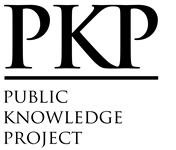Technology Options in a Dairy Plant: Assessing Whole-System Eco-Efficiency
Abstract
Industries are increasingly looking beyond their own fences to optimise their supply and delivery chains. Increasing industrial production costs for resources and costs to comply with stringent legislation have led many industries to look for more cost effective solutions. Establishing collaboration with water and energy utilities and other industries in the neighbourhood of the industrial production site is one option being analysed.
This paper presents how eco-efficiency analysis - at a system level going beyond the fences of an industrial production site - can calculate economic value and environmental impacts in such wider systems. The paper presents how the analysis can lead to the identification of eco-efficient solutions at a system level as well as at the level of each actor in the system.
The eco-efficiency analyses are based on the ISO standard ISO 14045. The water use system analysis comprises a dairy plant producing milk powder located in a production site in Holstebro, Denmark. The dairy uses water in its utility operation and in the dairy processes for purposes like cleaning (Cleaning in Place, CIP), rinse processes and standardization of products.
In the eco-efficiency analysis a water value chain is modelled in five stages: water supply, dairy production, wastewater treatment, energy production (biogas) and transport. The eco-efficiency analysis thus has another focus than a Water Footprint analysis, which also includes water use for feed production, water used at farm level and in some cases also includes the water use at retail and consumer level. The eco-efficiency study focus not only on water efficiency but also on and how energy saving technology options linked to water use could upgrade the whole-system eco-efficiency.
The identification of the environmentally weak stages as being emissions of climate gasses resulting from energy use and water resource enables the selection of alternative actions, which could upgrade the whole value chain and improve the overall eco-efficiency. Four innovative technologies in the dairy production stage and one in the wastewater treatment stage are examined and three alternative technology scenarios combining these technologies are formulated. All scenarios focus on resource efficiency, while one also focuses on reducing the emissions to water.
The eco-efficiency assessments showed that advanced oxidation and UV light treatment of the water stream separated from the milk stream had the highest eco-efficiency corresponding to an increase of 130% compared to the baseline for the freshwater resource depletion indicator. Anaerobic pretreatment of the dairy wastewater in the dairy plant had the highest eco-efficiency showing an increase of 10% as compared to the baseline for the climate gas indicator. For all other technologies and combinations of technologies the increases were significantly smaller.
The eco-efficiency assessment results provided a basis for workshops with the actors in the value chain to discuss how to anticipate distributional effects. The analysis of the economic performance clearly showed that the dairy plant had the highest economic performance due to the high value of their product and that investments in new technologies increased the economic performance even more. This was mainly caused by savings on costs for water supply and wastewater treatment services, which left the water utility with a reduced economic performance.
Full Text:
PDFDOI: https://doi.org/10.5296/emsd.v5i1.8655
Refbacks
- There are currently no refbacks.
Copyright (c) 2015 Palle Lindgaard-Jørgensen, Gert Holm Kristensen, Martin Andersen

This work is licensed under a Creative Commons Attribution 4.0 International License.
Environmental Management and Sustainable Development ISSN 2164-7682
Copyright © Macrothink Institute
To make sure that you can receive messages from us, please add the 'macrothink.org' domain to your e-mail 'safe list'. If you do not receive e-mail in your 'inbox', check your 'bulk mail' or 'junk mail' folders.
------------------------------------------------------------------------------------------------------------------------------------------------------------------------
